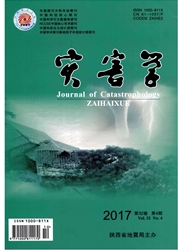

 中文摘要:
中文摘要:
应用高空探测资料、地面实况观测资料、以及美国NCEP/NCAR 1°×1°再分析资料,分析2016年1月22日至26日云南出现的大范围低温雨雪灾害性天气产生的原因。结果表明:这次过程造成滇中及以东以北大部地区最高气温降幅达10℃~18℃,全省出现大范围持续雨雪天气,滇中及以东以北地区和南部高海拔地区降雪明显有9个县最低气温突破历史同期极值。这次灾害天气过程是强冷空气南压影响云南形成降温,并受南支槽东移影响,孟加拉湾的西南暖湿气流与北方冷空气交汇造成云南大部分地区出现雨雪天气。另外,水汽条件、动力条件的较好配合也是这次强寒潮天气产生的原因。
 英文摘要:
英文摘要:
This process was analyzed based on atmospheric sounding data,ground observation data and NCEP/NCAR1° × 1°interval reanalysis data. This paper analyzed the causes of the large-scale low-temperature rain and snow disaster in Yunnan from January 22 to 26,2016. Results showed that this process resulted in a decrease in temperatures of 10 ° C to 18 ° C in most parts of the north and east and the central of Yunnan province. The province has a large range of sustained rain and snow weather,the snowfall in central and north and the east regions and southern high altitude areas was obviously,9 counties have a minimum temperature breakthrough over the same period the extreme value. The course of this disaster weather process was that the strong cold air moving southward caused Yunnan cooling,and because of the south trough moving eastward,the southwest warm and humid air flow of the Bay of Bengal intersected with the north cold air. In addition,the good cooperation of water vapor condition and dynamic condition was also the reason of this cold wave weather process.
 同期刊论文项目
同期刊论文项目
 同项目期刊论文
同项目期刊论文
 期刊信息
期刊信息
